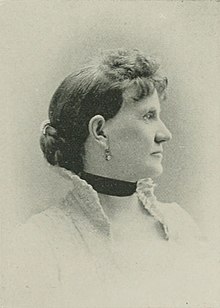John G. Carlisle
John G. Carlisle | |
|---|---|
William Dickerson | |
| 20th Lieutenant Governor of Kentucky | |
| In office September 5, 1871 – August 31, 1875 | |
| Governor | Preston Leslie |
| Preceded by | Preston Leslie |
| Succeeded by | John C. Underwood |
| Personal details | |
| Born | John Griffin Carlisle September 5, 1834 Campbell County, Kentucky, U.S. (now Kenton County) |
| Died | July 31, 1910 (aged 75) New York City, U.S. |
| Resting place | Linden Grove Cemetery |
| Political party | Democratic |
| Spouse | Mary Goodson |
| Children | 5 |
| Signature | |
John Griffin Carlisle (September 5, 1834 – July 31, 1910) was an American attorney and Democratic Party politician from Kentucky. He represented Kentucky in the United States House of Representatives from 1877 to 1890, serving as the 31st Speaker of the House from 1883 to 1889, and served in the United States Senate from 1890 to 1893. He served as the 41st Secretary of the Treasury, in the second administration of President Grover Cleveland, from 1893 to 1897—a period that included the Panic of 1893. As a Bourbon Democrat he was a leader of the conservative, pro-business wing of the party, along with Cleveland.
Biography

Carlisle was born in what is now Kenton County, Kentucky. He was well educated and took a post as a teacher in Covington, Kentucky. His father died in 1853 and he was left to support his family. He studied law under John W. Stevenson, and joined the law firm of William Kinkeard in Covington at the age of 23. Carlisle married Mary Jane Goodson on January 15, 1857, and they had five children, all of whom predeceased them.[1]
Despite the political difficulties that taking a neutral position during the
House of Representatives
After Carlisle's term as
As Speaker, Carlisle was both admired for and handicapped by his fairness and congeniality:
His name belongs in the short list of great Speakers. His opinions read like the decisions of an eminent judge. His impartiality and the sweetness of his manner prompted the minority members to present him a loving-cup as an evidence of their affection. But dilatory motions, the
disappearing quorum, and his refusal to ascertain the presence of a quorum by counting the House made him the slave of filibusters.[2]
"[H]e is the ablest man they have on that side of the House," said his Republican rival and successor Thomas Brackett Reed, "[b]ut no Speaker could do any better with his hands tied by the rules we are working under."[3]
Carlisle became a leader of the conservative
Senate and Treasury Department
In May 1890, the Kentucky legislature elected Carlisle to the United States Senate to fill the nearly four years remaining in the unexpired term of the late Sen. James B. Beck. He served until February 1893, when he resigned to become Secretary of the Treasury under Cleveland, who had been elected president in November 1892.
Carlisle's tenure as Secretary was marred by the
By 1896, the once remarkably popular Carlisle was so disliked due to his stewardship of the currency that he was forced to leave the stage in the middle of a speech in his home town of Covington due to a barrage of abuse. Feeling rejected, he retired from public life and sold his house in Covington.[1]
Later career and death
By May 1899, the North American Trust Company had directors such as John G. Carlisle, Adlai E. Stevenson, and Wager Swayne.[5]
He moved to New York City, where he practiced law, and died on July 31, 1910, at age 75, and is buried in Linden Grove Cemetery in Covington, Kentucky.[6]
Legacy
Carlisle County, Kentucky was established in 1886.[7]
References
- ^ ISBN 978-0-8131-5996-6.
- ^ Alexander, DeAlva Stanwood (1916). History and Procedure of the House of Representatives. Boston and New York: Houghton Mifflin Co. p. 205.
- ^ Robinson, William A. (1930). Thomas B. Reed: Parliamentarian. New York: Dodd, Mead & Co. p. 103.
- ^ David T. Beito and Linda Royster Beito, "Gold Democrats and the Decline of Classical Liberalism, 1896-1900," Independent Review 4 (Spring 2000), 555-75
- ^ "Trust Company Election; The North American Chooses Alvah Trowbridge as Its Leader. He Succeeds Col. Trenholdm - The New Head Brings to the Corporation Important Financial Interests -- No Friction". The New York Times. May 27, 1899. p. 3. Retrieved July 16, 2017.
- ISBN 0813108659. Retrieved November 24, 2013.
- ^ The Register of the Kentucky State Historical Society, Volume 1. Kentucky State Historical Society. 1903. pp. 34.
Sources
- United States Congress. "John G. Carlisle (id: C000152)". Biographical Directory of the United States Congress.
- Barnes, James A. John G. Carlisle: Financial Statesman. New York : Dodd, Mead, 1931.
- Beito, David T., and Linda Royster Beito. Gold Democrats and the Decline of Classical Liberalism from 1896 to 1900, Independent Review 4 (Spring 2000), 555–75.
- Encyclopedia of Kentucky. New York: Somerset Publishers. 1987. pp. 127–129. ISBN 0-403-09981-1.
- Garraty, John A. and Mark C. Carnes. American National Biography, vol. 4, "Carlisle, John G.". New York : Oxford University Press, 1999. (ISBN 0-19-512783-8)
- McAfee, John J. (1886). Kentucky politicians : sketches of representative Corncrackers and other miscellany. Louisville, Kentucky: Press of the Courier-Journal job printing company. pp. 44–47.
- Williams, R. Hal. Years of Decision: American Politics in the 1890s. New York : Wiley, 1978.
External links
- John G. Carlisle Archived May 31, 2016, at the Wayback Machine at Linden Grove Cemetery
- . Appletons' Cyclopædia of American Biography. 1900.
